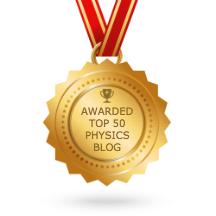Many more techniques are available for imaging with magnetic resonance than for x-ray computed tomography. They are described by Brown et al. (1994), by Cho et al. (1993), by Vlaardingerbroek and den Boer (2004), and by Liang and Lauterbur (2000). One of these authors, Paul C. Lauterbur, shared with Sir Peter Mansfield the 2003 Nobel Prize in physiology or medicine for the invention of magnetic resonance imaging.Mansfield made many contributions to the development of MRI, including the invention of echo-planar imaging. Russ and I write
Echo-planar imaging (EPI) eliminates the π pulses [normally used to rotate the spins in the x-y plane to form a spin echo]. It requires a magnet with a very uniform magnetic field, so that T2 [the transverse relaxation time, that is determined in part by dephasing of the spins in the x-y plane] (in the absence of a gradient) is only slightly greater than T2* [the experimentally observed transverse relaxation time]. The gradient fields are larger, and the gradient pulse durations shorter, than in conventional imaging. The goal is to complete all the k-space [all the points kx-ky in the spatial frequency domain] measurements in a time comparable to T2*. In EPI the echoes are not created using π pulses. Instead, they are created by dephasing the spins at different positions along the x axis using a Gx gradient, and then reversing that gradient to rephrase the spins, as shown in Fig. 18.32.
 |
| A MRI pulse sequence for echo planar imaging, from Intermediate Physics for Medicine and Biology. |
Mansfield tells about his first presentation on echo-planar imaging in his autobiography, The Long Road to Stockholm.
It was during the course of 1976 that Raymond Andrew convened a meeting in Nottingham of interested people in imaging…Most attendees brought us up to date with their images and gave us short talks on the goals that they were pursuing. Although my group had made considerable headway in a whole range of topics, I chose to speak about an entirely new imaging method that I had worked out theoretically but for which I had really no experimental results. The technique was called echo planar imaging (EPI), a condensation of planar imaging using spin echoes. I spoke for something like half an hour, talking in great detail, and at the end of the talk the audience seemed to be left in stunned silence. There were no questions, there was no discussion at all, and it was almost as though I had never spoken. In fact I had given a detailed talk about how one could produce very rapid images in a typically one shot process lasting, conservatively, for something like 40 or 50 milliseconds.You can learn more about Mansfield in obituaries in the New York Times, in The Scientist, and from the BBC. Also, the Nobel Prize website has much information including a biography and his Nobel Prize address. Below, watch and listen to Mansfield talk about MRI.



